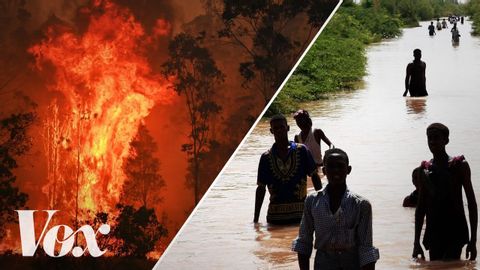Why Australia's fires are linked to floods in Africa
Courtney Shih 發佈於 2020 年 01 月 20 日  沒有此條件下的單字
沒有此條件下的單字US /ɪnˈtɛns/
・
UK /ɪn'tens/
US /ɛnˈtaɪr/
・
UK /ɪn'taɪə(r)/
- adj.全體的 ; 完全的;未分割的;全緣的 (植物學)
US /ˈprɑsˌɛs, ˈproˌsɛs/
・
UK /prə'ses/
- v.t.用電腦處理(資料);(依照規定程序)處理;處理;流程;加工;理解
- n. (c./u.)(規定的)程序;過程;進程;方法;法律程序;進程
